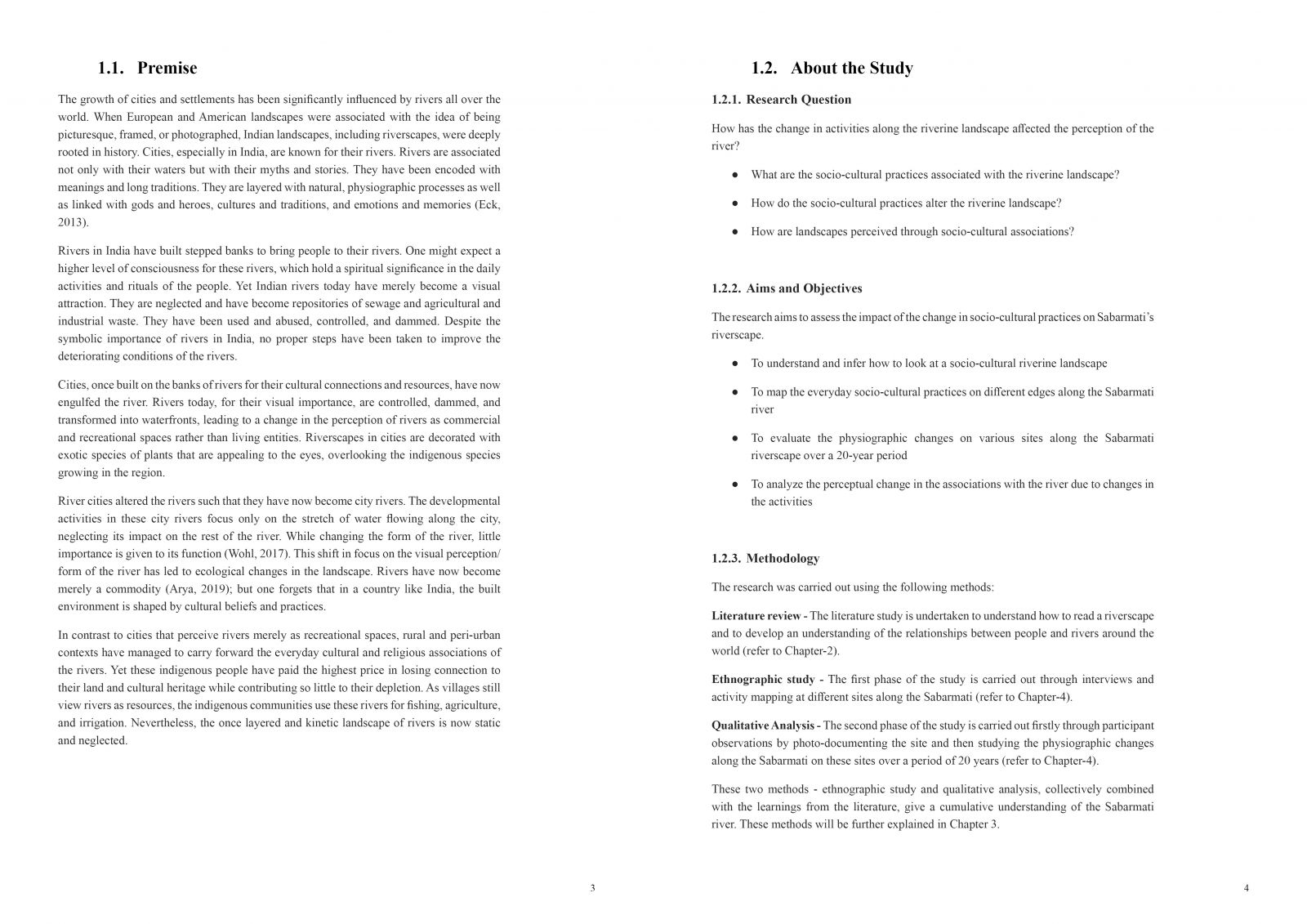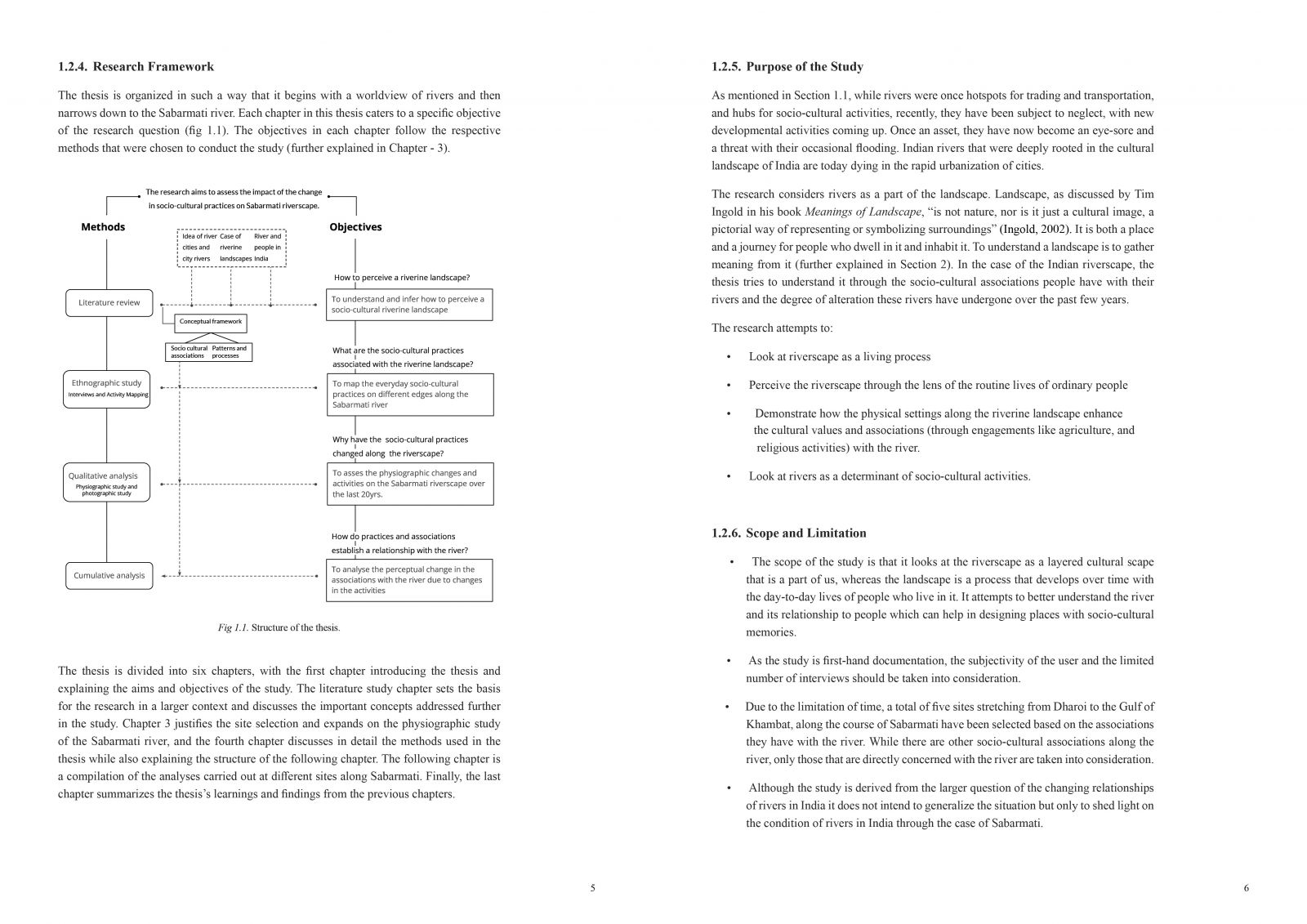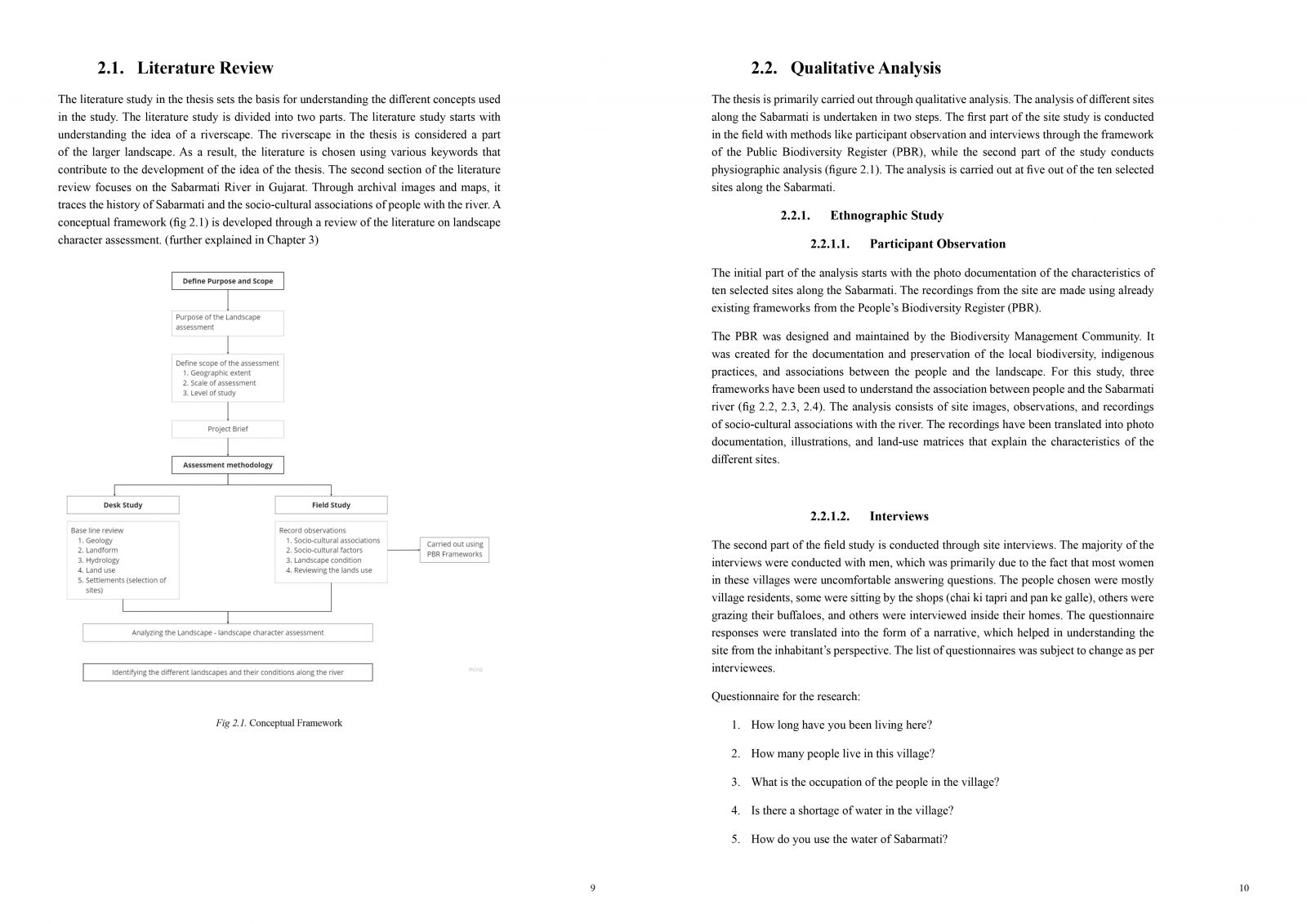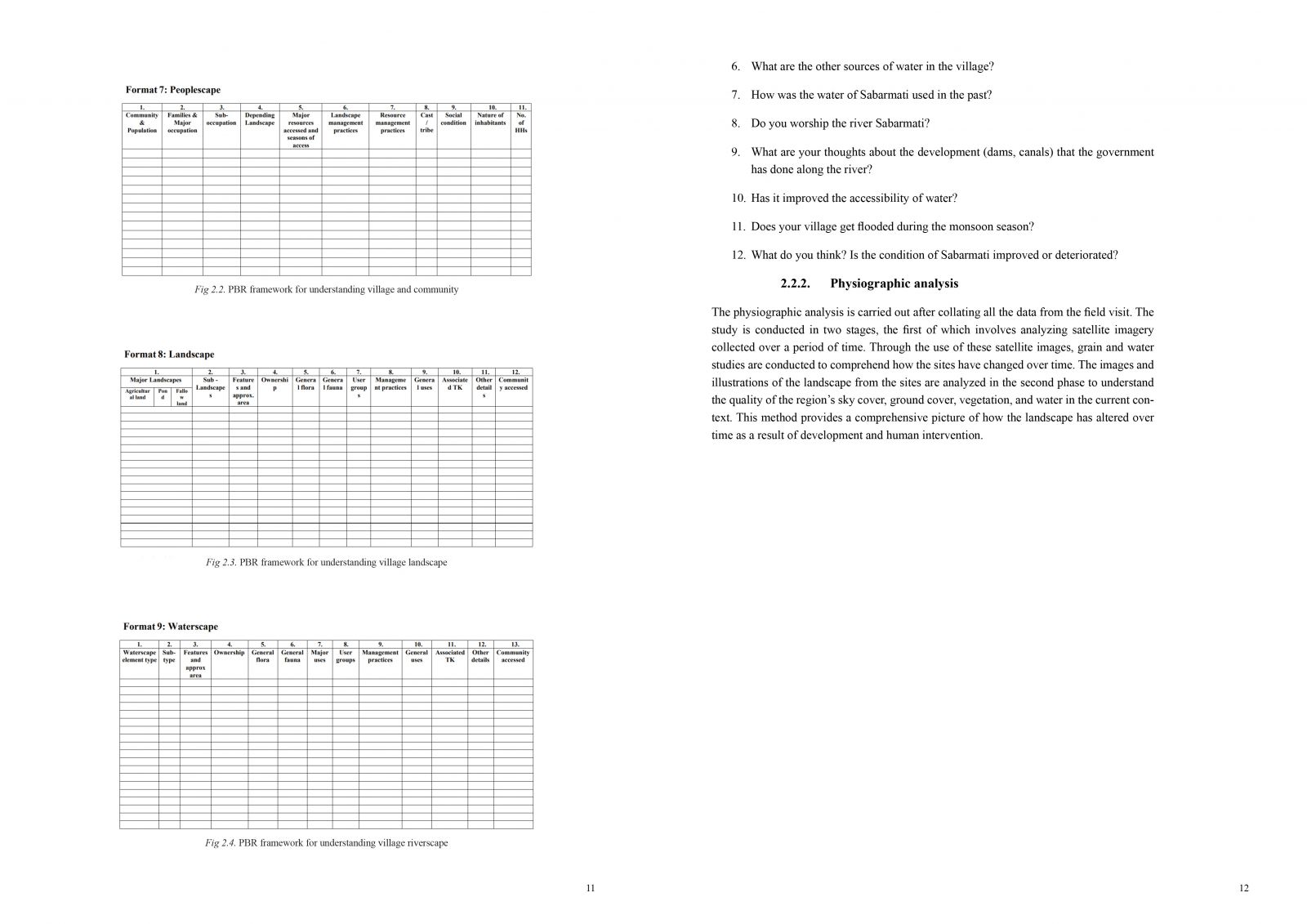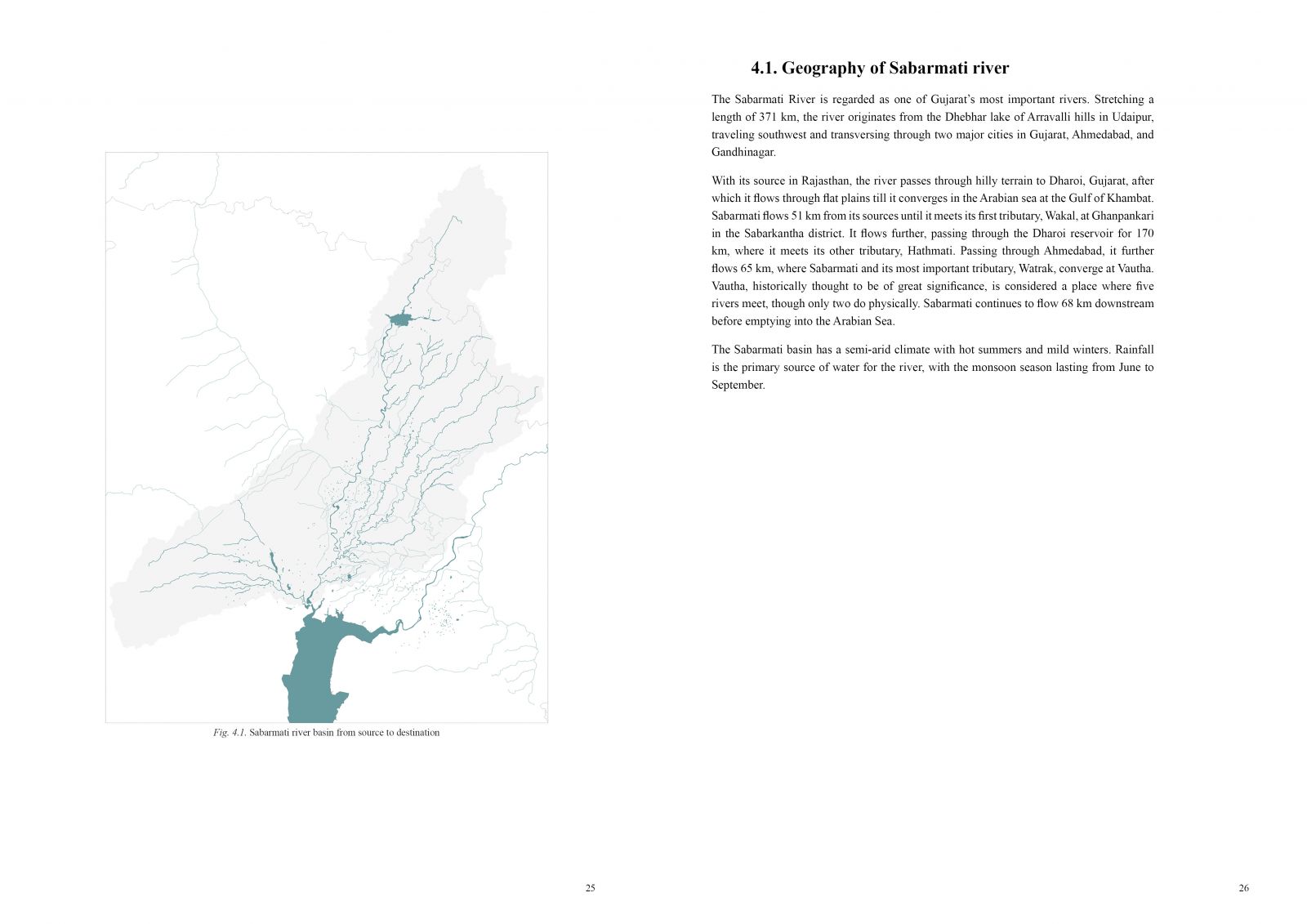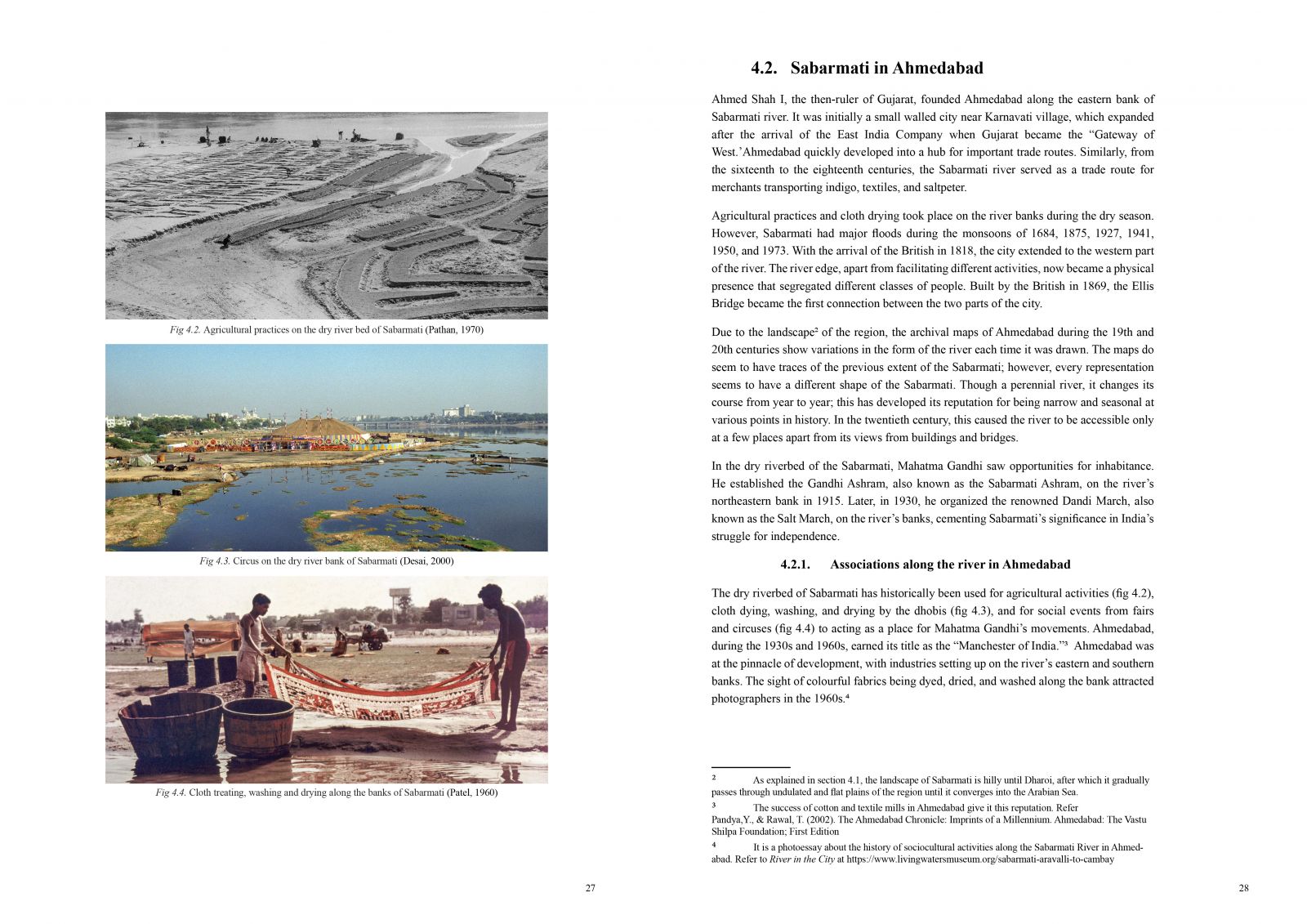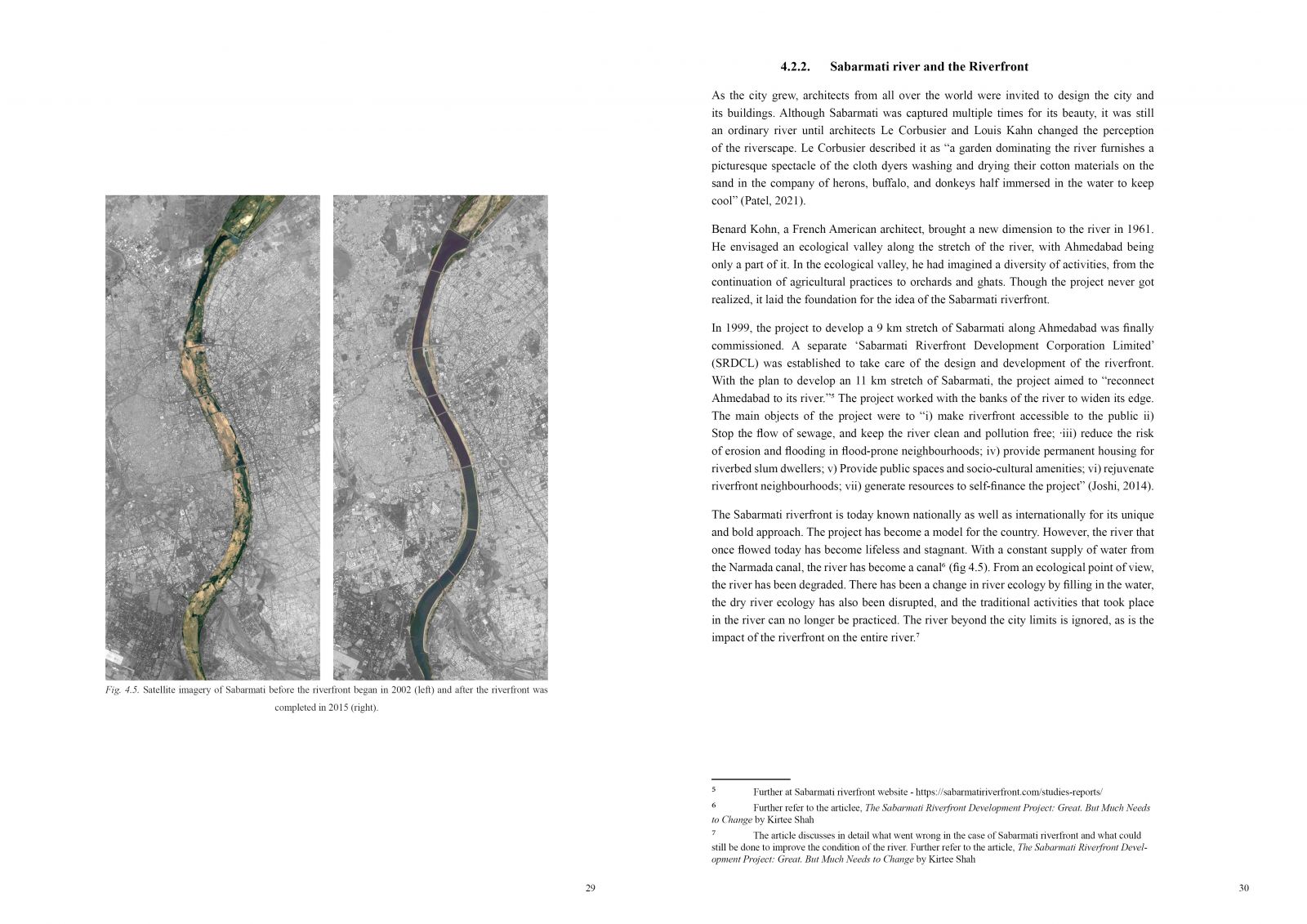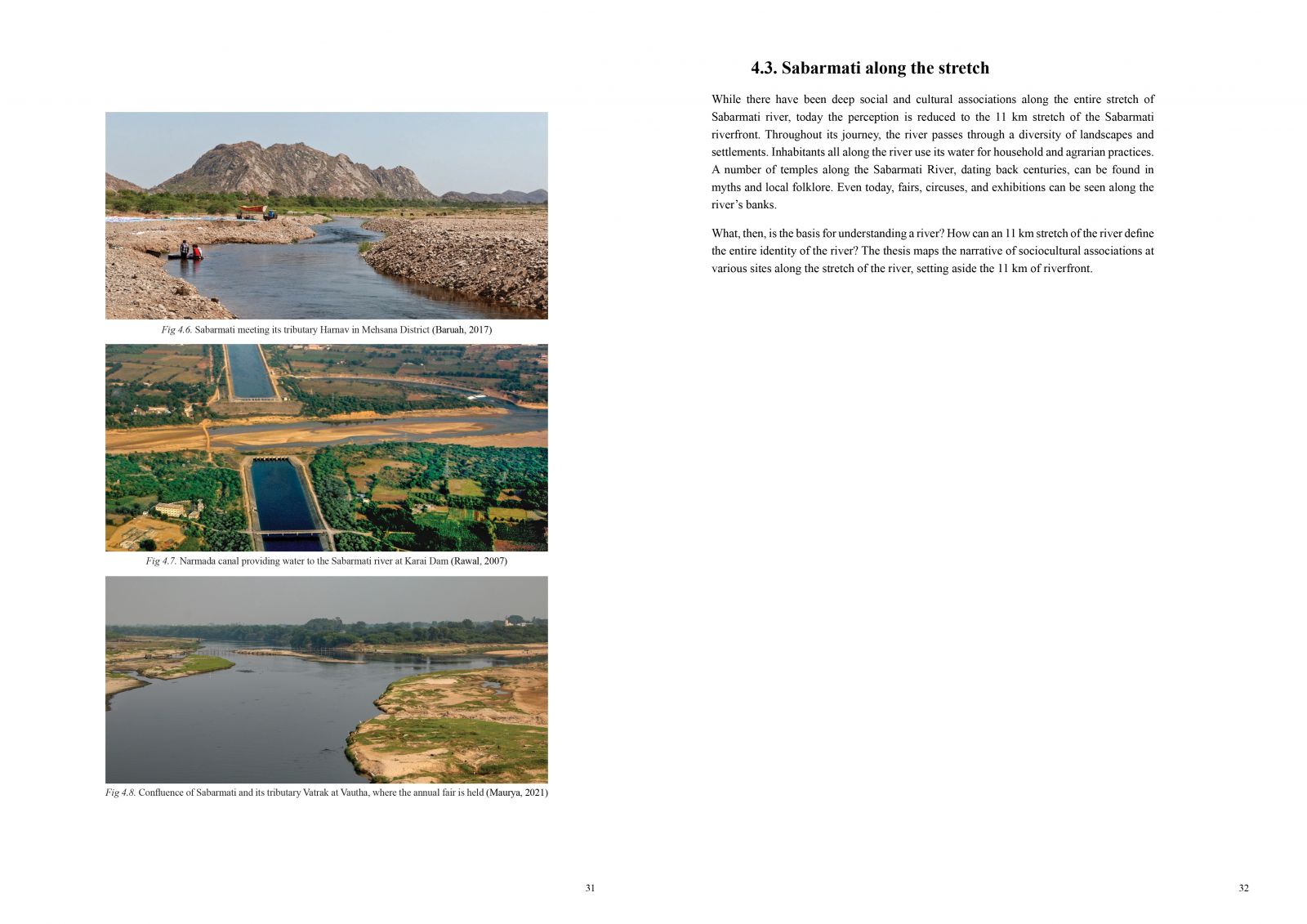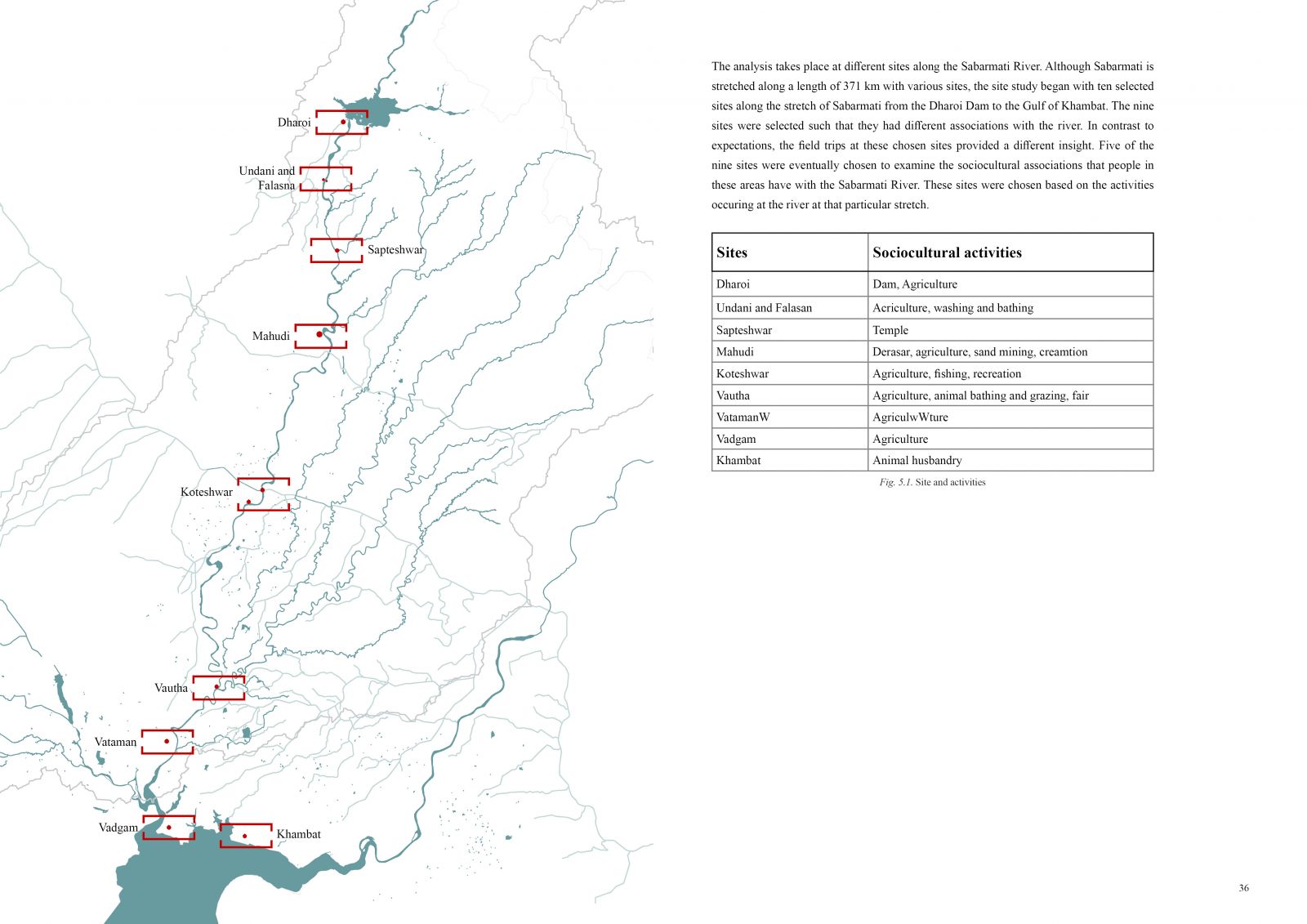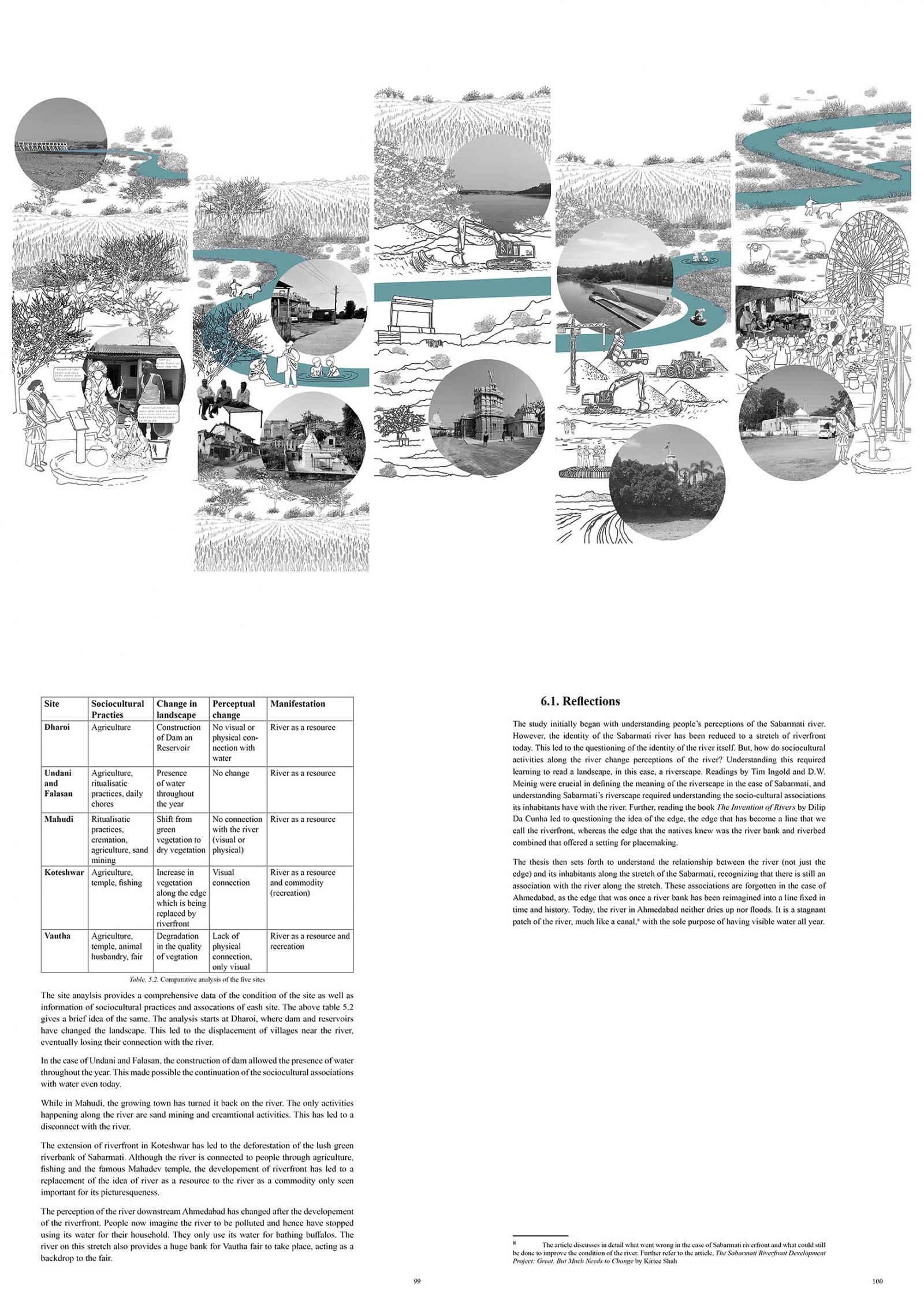Your browser is out-of-date!
For a richer surfing experience on our website, please update your browser. Update my browser now!
For a richer surfing experience on our website, please update your browser. Update my browser now!
Reading a riverscape: Establishing Sociocultural associations between Sabarmati and its PeopleRivers have been celebrated and worshiped throughout history and civilizations for their attributes. Rivers have led to the growth of cities and acted as lifelines for species. However, with the development of other transports and technologies, rivers have become commodified today. The sociocultural relationships that people once had with the rivers- washing clothes, bathing, and using water for cooking and drinking - are now forgotten, changing the perception of rivers. The thesis aims to understand the changing relationships of people with their river through socio-cultural mapping along the Sabarmati River. One of the most important rivers in India, the Sabarmati, is spread along a stretch of 371 km. The Sabarmati river has had a rich history of sociocultural activities along its banks, with cities like Ahmedabad and Gandhinagar developing on its edges. The larger study started with tracing the meanings of landscape and different ways to look at it, with the riverscape as a part of the landscape. Rivers were then studied for their attributes as facilitators for placemaking and sociocultural activities, giving people different associations throughout history. The understanding of the literature study and frameworks was used to map the narrative of sociocultural experiences along the Sabarmati river. The cumulative analysis of the findings concluded that the Sabarmati river is a determinant for placemaking. But with the changes in the activities of the river, the perception of the river has also changed. Through the findings and the readings, the idea of river and edge was also put into question, is it the visual presence of water or the relationships of people with the river that constitute the idea of the river?
